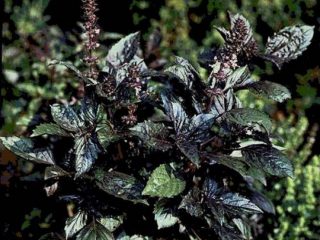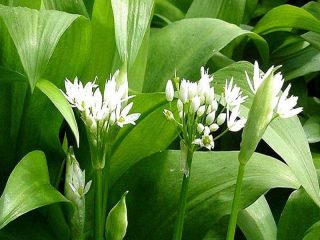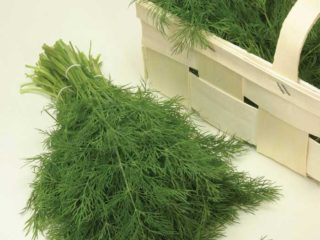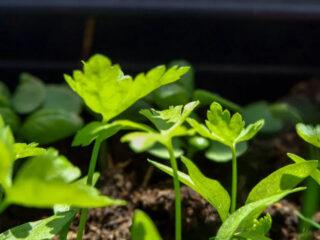Content
Nettle is one of the plants widely used in folk medicine for a long time. It is in great demand due to its rich composition of vitamins, macro- and microelements, which provides a beneficial effect on the body in different directions. Stinging nettle when breastfeeding helps a woman to improve lactation and recover from childbirth.
The composition and value of the plant
Nettle is an extremely healthy plant. Its chemical composition includes almost all vitamins vital for women after childbirth and during breastfeeding:
- A (has a beneficial effect on blood composition, participates in hematopoiesis);
- C (restores the general tone of the body during breastfeeding and strengthens the immune system);
- E (considered a "beauty vitamin", "responsible" for the normal condition of the skin, hair, nails);
- K (necessary for the synthesis of red blood cells, helps to maintain normal blood clotting, reduces blood loss during heavy menstruation);
- H (activates metabolism, providing the body with the energy necessary for vital activity);
- group B (participate in the processes of metabolism and tissue regeneration).
Also, nettle is rich in potassium, phosphorus, sodium. Of the microelements, the presence of:
- magnesium;
- calcium;
- gland;
- silicon;
- zinc;
- Selena;
- boron;
- titanium;
- copper;
- chlorine;
- sulfur.
But these substances useful for humans in the composition are not limited to. It is scientifically proven that nettles contain:
- amino acids (histamine, porphyrin, sirotinin);
- tannins;
- phytoncides;
- flavonoids;
- organic acids (phenolic, pantothenic, phenolcarboxylic);
- essential oils.
The uniqueness of the composition provides a complex beneficial effect on the body. Therefore, it is possible and necessary to drink nettle for nursing. Its benefits are as follows:
- prevention and control of inflammatory processes;
- urine and choleretic effect;
- stimulation of the synthesis of erythrocytes;
- cleansing the blood, normalizing its composition (including lowering sugar levels and increasing hemoglobin), increasing coagulability;
- vasoconstriction;
- restoration of the immune system, normalization of metabolism and lipid metabolism;
- lactogenic effect;
- acceleration of the restoration of any mucous membranes and the elasticity of the vascular walls;
- beneficial effect on the cardiovascular system and the musculoskeletal system in general;
- restoration of the menstrual cycle;
- fight against hypo- and avitaminosis.
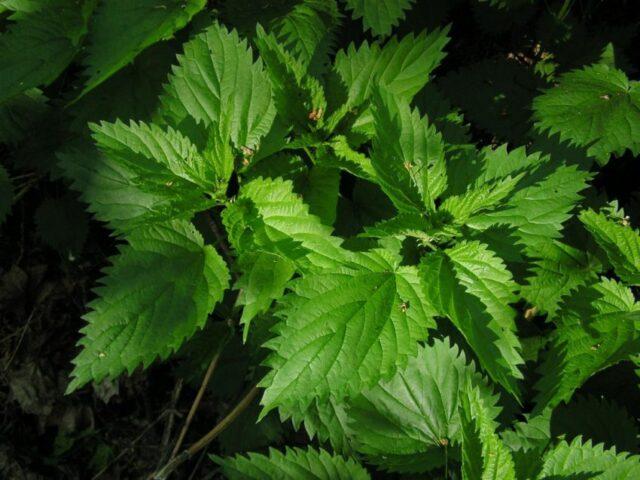
Most people consider nettle a weed, but it is just a storehouse of vitamins and minerals that are in demand for any organism.
Is it possible to use nettles while breastfeeding
If a woman has no contraindications, the answer to the question "is it possible to drink nettle for a nursing mother" - definitely yes.Its benefits for the body in the postpartum period are recognized even by official medicine.
Pregnancy is always a serious stress, accompanied by a cardinal hormonal "restructuring" of the body. It leads to the fact that most of the nutrients provide the needs of the fetus, the body of the expectant mother is supplied with them according to the residual principle. Nettle helps to restore hormonal balance as quickly as possible, return to the state before pregnancy, even with breastfeeding.
With a shortage of milk for breastfeeding (this can be caused by a whole complex of factors), it has a powerful lactogenic effect. Nettle is an indispensable ingredient in most drugstore preparations for stimulating lactation. The formulations are useful not only for the mother's body, but also for the baby, who receives vitamins and minerals through breastfeeding. This is an effective prevention of colic in babies.
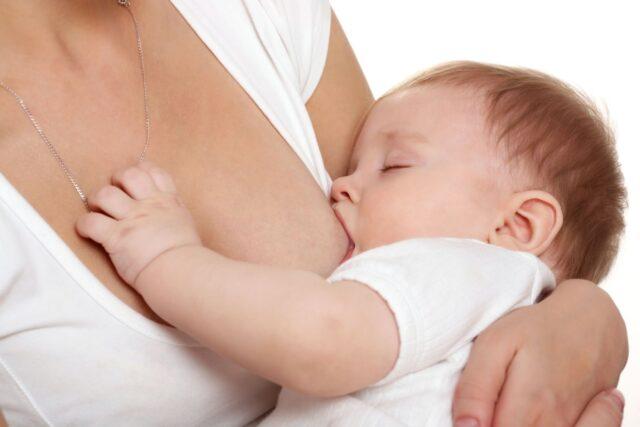
The benefits of nettle for breastfeeding and for postpartum recovery of the body have been tested by many women.
Benefits of nettles for hepatitis B
The benefits of nettle leaves for breastfeeding can hardly be overestimated. Decoction or infusion of them:
- restores metabolism, "starts" the processes of tissue regeneration;
- maintains the elasticity of the walls of blood vessels;
- stimulates appetite, improves the functioning of the digestive system;
- normalizes the menstrual cycle;
- fights heavy bleeding (lochia and menstruation) and inflammation;
- provides a lactogenic effect;
- compensates for the deficiency of iron and other trace elements, fights against vitamin deficiency
- raises the general tone of the body, helps to get rid of the extra pounds gained in 9 months;
- has a beneficial effect on the condition of the skin, nails, hair.

If possible, it is better to harvest nettle for infusions and decoctions while breastfeeding on your own
Benefits of nettle decoction for nursing mothers
Folk remedies from nettle during breastfeeding not only increase the volume of milk, but also improve its quality. Its fat content and overall nutritional value increase. A baby who receives all the necessary vitamins and minerals through breastfeeding in the right amount will strengthen the nervous system faster. He is less capricious, cries, sleeps better.
The iron contained in nettle is especially important for the child's body. Normal growth and development of the baby is impossible without it.
To increase lactation
Nettle does not directly affect the work of the mammary glands during breastfeeding. The volume of milk increases due to the fact that the mother's body regains its tone, recovers after severe physical and psychological exhaustion. Other unfavorable factors are often added to it:
- chronic fatigue and lack of sleep;
- postpartum depression;
- strong emotional experiences;
- digestive problems.
To ensure a comprehensive improvement of the body, and, as a result, to establish milk production for breastfeeding, seeds and greens of dill, fennel, caraway seeds, galega, anise are added to the collection with nettle.
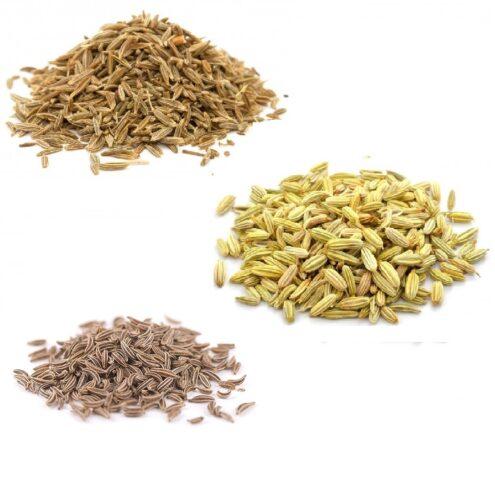
Dill, fennel, cumin seeds are also useful for those who choose breastfeeding, provide the body with a lactogenic and general strengthening effect
For uterine contraction
Restoring the normal size of the uterus for the body is one of the primary goals. Nettle is a very effective remedy for this. It not only stimulates the contraction of the muscles of the uterus, as a result of which it contracts, but also squeezes the blood vessels that nourished the fetus before giving birth.Accordingly, normalizing the size of the uterus, it simultaneously prevents postpartum bleeding and infections, helps to remove lochia from the body, and reduces the intensity of pain.
With iron deficiency anemia
It is extremely rare to avoid anemia during pregnancy. Iron deficiency is also noticeable with breastfeeding. Women note general weakness, apathy, lethargy, increased fatigue, severe drowsiness.
Nettle during breastfeeding is a valuable source of biologically active iron. Its atoms are easily "incorporated" into the blood, restoring the normal level of hemoglobin. The desired result is achieved in 2-2.5 months.
With heavy menstruation
Menstruation that is unusually heavy and painful after childbirth and during breastfeeding is common. Nettle provides the body with vitamin K and chlorophyll. In the complex they are:
- replenish iron deficiency and stimulate the production of red blood cells to compensate for blood loss;
- relieve pain syndrome, work as an antispasmodic;
- heal damage that is inevitable due to epithelial rejection.
How to brew and drink
Despite the seeming "harmlessness" of herbs for the body, you need to drink nettle during breastfeeding without exceeding the daily norm and the duration of the course of "treatment". It is equally important to properly prepare the infusion or decoction of nettle to improve lactation.
Preparation of a decoction of nettle for lactation
Raw materials can be purchased at the pharmacy (in bulk or in portions, in filter bags) or prepared independently. In the second case, it is better to go for fresh herbs in May or early June, when the concentration of nutrients in the nettle is maximum. They collect it as far as possible from highways, industrial enterprises, and other objects that negatively affect the environment.
Prepare a decoction useful for breastfeeding, as follows:
- Pour in a saucepan with a glass of clean water 2 tbsp. l. dry or finely chopped fresh nettle.
- Close the container with a lid, bring to a boil in a water bath, remove from the stove after 10-15 minutes.
- Without removing the lid, cool the broth to body temperature, strain, pour in another glass of warm water.

It is permissible to immediately prepare the daily norm of the broth and add a little hot water with each use.
For a change, you can drink nettle during lactation in the form of an infusion. It prepares like this:
- Pour 20-25 fresh leaves or 1 tbsp with boiling water (300-400 ml). l. dry.
- Close the container tightly, wrap it in a towel (or pour the liquid into a thermos), let it brew for an hour.
- Strain the finished infusion.
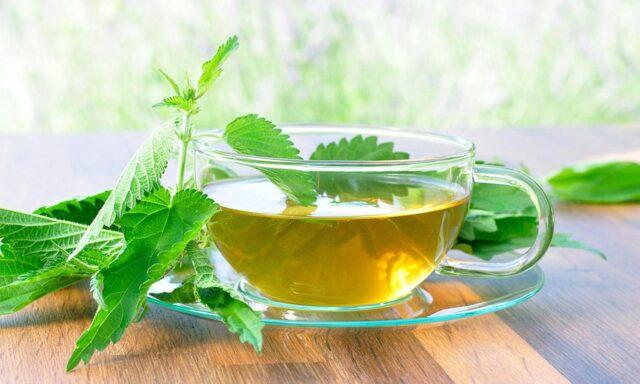
In appearance, the nettle infusion is not much different from the decoction, the cooking time and the concentration of nutrients are also approximately the same.
Other recipes for decoctions and infusions
Stinging nettle is found in almost all herbal mixtures recommended for breastfeeding:
- Take a tablespoon of dry herbs of nettle, yarrow and dill. Pour 1 liter of boiling water, leave for at least 2 hours. Better even to leave it in a thermos overnight.
- Mix in a 2: 1: 1 ratio of finely chopped fresh nettles, fennel seeds and caraway seeds. Pour a tablespoon of the collection with 0.2 liters of boiling water, leave for half an hour.
- Prepare the infusion, as in the previous version, using dill and anise seeds.
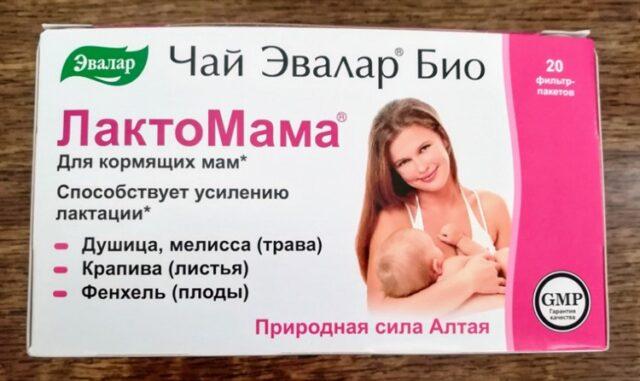
Pharmacy teas recommended by those who choose breastfeeding almost always contain nettle leaves
For a woman who is breastfeeding, a drinking regimen is very important.Therefore, dry leaves in a ratio of about 1: 2 are recommended to be added to large leafy green or white tea. Or, a decoction of nettle during breastfeeding can be poured into an already prepared drink.
Admission rules
In order not to harm the child's own health and health, when breastfeeding, decoctions and infusions of nettle are introduced into the diet gradually. You can start when the baby is one month old. Single serving - about 2 tbsp. l. immediately after the first feeding in the morning.
If the baby does not have allergies and other negative reactions, the "dose" can be gradually increased by 20-30 ml every 3-4 days. The limit is 250 ml at a time. Otherwise, with the use of nettle products, you should wait up to six months. To obtain the maximum lactogenic effect, the broth or infusion is drunk warm, 30-45 minutes before feeding, 3-4 times a day.
Nettle recipes for nursing mothers
Nettle during breastfeeding can be used not only as raw materials for decoctions and infusions. Healthy dishes are prepared from greens that will pleasantly surprise you with their taste and help diversify the diet.
Nettle salad
This salad is just a "vitamin bomb", and useful elements for breastfeeding are vital for the mother. Unfortunately, it can only be cooked in spring and early summer.
What you need:
- leaves of young nettle, wild garlic, sorrel - 100 g each;
- eggs (one chicken or 5-6 quail);
- sour cream 10-15% fat or refined vegetable oil (olive, sunflower, any other) - for dressing;
- a pinch of salt - optional (but it's better to do without it).
The salad preparation process is extremely simple:
- Wash, squeeze lightly and dry the herbs.
- Hard boil the eggs.
- Chop finely and mix all ingredients. Season the salad.
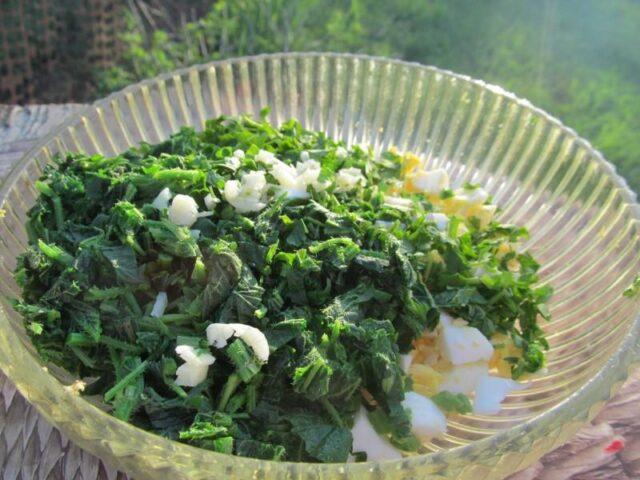
The dish can be introduced into the diet when the child is six months old.
Young nettle soup
Nettle soup can be cooked in a broth made from lean lean meat (beef, chicken, turkey), or simply on water. The first option, of course, is tastier and more nutritious, which is an important factor when breastfeeding.
Required Ingredients:
- boiling water or broth - 1 liter;
- fresh nettle leaves - 220-250 g;
- medium potatoes - 3 pcs.;
- small onion and carrots - 1 pc each;
- lemon juice - 1 tbsp. l .;
- refined vegetable oil - for frying;
- bay leaf, salt - to taste and as desired;
- chicken egg - 1 pc.;
- low-fat sour cream - 1 tbsp. l.
Soup is prepared extremely simply and quickly, which is an important factor for a mother with a baby:
- Peel potatoes, cut into cubes, toss into a saucepan with broth, put on fire.
- Chop the onion finely, grate the carrots, fry in oil until golden brown.
- Chop the nettle, mix with the roast, add to the soup 5-7 minutes until the potatoes are ready.
- After another 1-2 minutes, add salt to the dish, add bay leaves.
- Pour lemon juice into the finished soup, stir, let it brew for at least half an hour. Serve with sour cream and hard boiled egg.

It is quite possible to cook a puree soup if you remove the potatoes from the broth when it is boiled and knead it.
Pie with cottage cheese and nettle
Ready-made yeast dough is quite suitable for him, but it is better to cook it yourself. Would need:
- wheat flour - 200 g;
- cottage cheese 5-9% fat - 100 g;
- vegetable oil - 100 ml;
- salt - on the tip of the knife.
For filling:
- fresh nettle leaves - 300 g;
- any greens to taste (dill, parsley, green onions, lettuce, spinach, sorrel) - about 100 g;
- cottage cheese (the higher the fat content, the better) - 200 g;
- sour cream 20% fat - 150 g.
To make a pie, you need:
- Knead the dough from all the ingredients, divide it in half.
- Grind the herbs for the filling (in a blender or chop with a knife), mix with sour cream and cottage cheese.
- Grease a baking sheet or baking sheet with oil, put a "sheet" of half of the dough on it with a thickness of 0.7-1 cm.
- Spread the filling over it evenly, close with a second "sheet", pinch the edges.
- Bake at 180 ° C for 30-40 minutes.
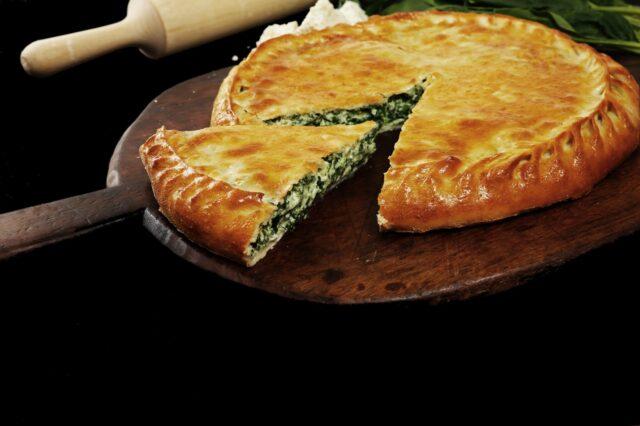
The pie can be made open, but then the filling will not be so soft.
Limitations and contraindications
The health benefits of nettle are undeniable and scientifically proven, however, like any folk remedy, when breastfeeding, it can cause allergies in the mother and / or child. This phenomenon is rare, but not impossible.
Individual intolerance is not the only contraindication for using nettle while breastfeeding:
- hypertension or severe atherosclerosis, increased blood clotting;
- any chronic diseases of the kidneys, pelvic organs;
- acute renal or heart failure;
- varicose veins, thrombosis, thrombophlebitis;
- the presence of tumors (even benign and with an unexplained etiology), as well as cysts and polyps, especially if they are accompanied by bleeding;
- the need for a course intake of antidepressants or drugs to combat insomnia (nettle enhances their effect);
Even if it seems that there are no contraindications, and despite the numerous positive feedback from mothers about the benefits of nettle for lactation of breast milk, you cannot "prescribe" it yourself. It is necessary to consult with your doctor about the possibility of taking infusions and decoctions with breastfeeding, including it in the diet. The duration of the "course" and the frequency of admission must also be determined by a specialist.
Conclusion
Nettle during breastfeeding, if there are no contraindications, is an extremely effective remedy for improving lactation. She also helps a woman to recover faster after childbirth. However, like any folk remedy, infusions and decoctions of nettle will give the desired effect only if you prepare them correctly, observe the dosage and do not abuse "drugs". Subject to the rules, they are absolutely safe for the health of the mother and child.


